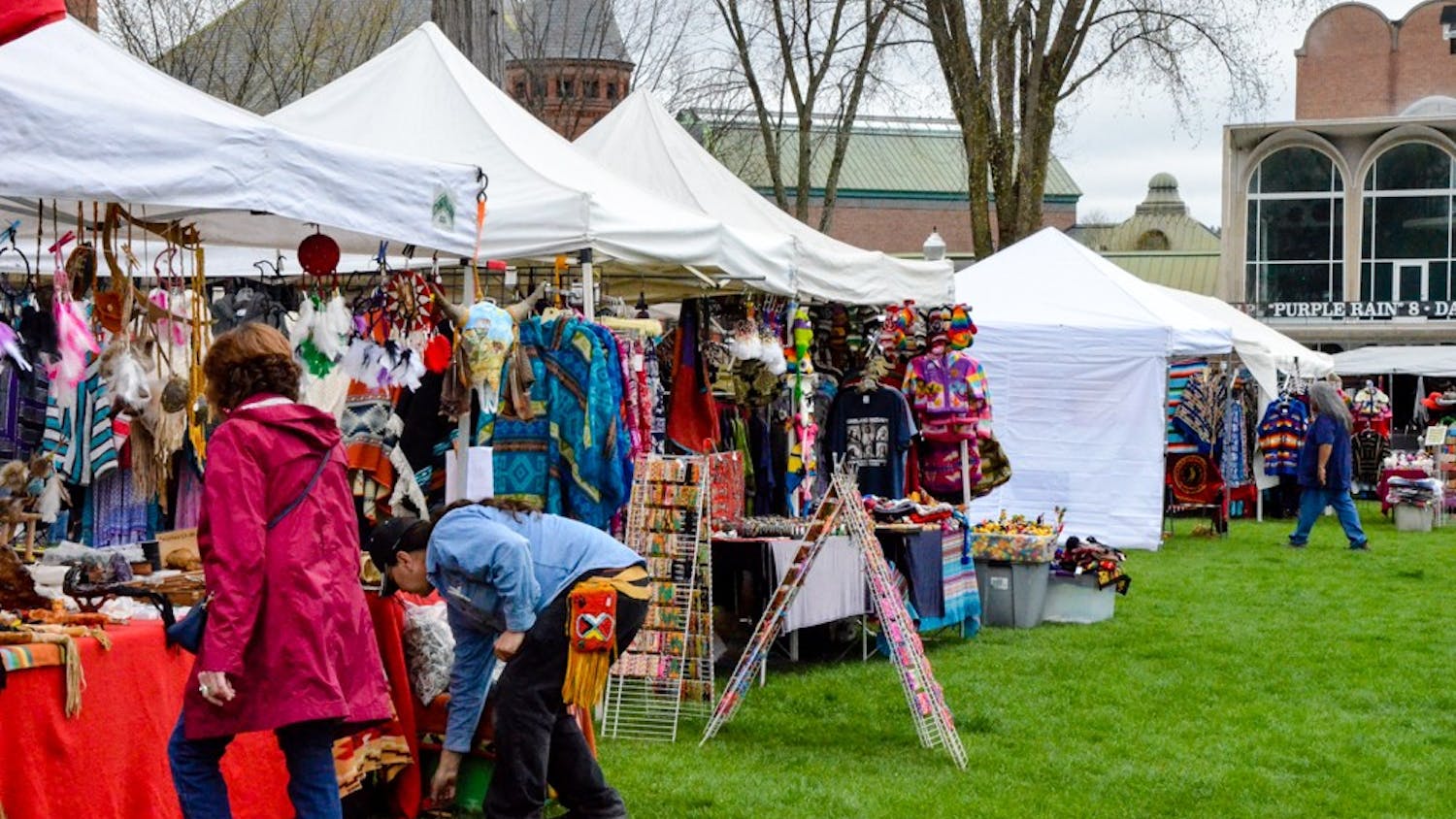From a frybread baking contest to a panel on climate change, Indigenous Peoples’ Month at the College depicts a myriad of events centered on culture, collaboration and current issues. The month-long celebration also represents a feeling of community belonging.
“I am a member of the Curyung Tribe in Alaska, but even here in Hanover, I see myself in this community,” said Kylee Sifsof ’23. “The people here are so proud to be Native, and that is so great to see. I felt so happy, so represented.”
Noting the diversity of Indigenous cultures represented in the programming occurring this month, Sifsof discussed the greater sense of community within the Native student body.
“Until seeing all of the events, I didn’t realize all of the different types of Indigenous people here on campus,” Sifsof said.
She added that she had been able to meet Abenaki people while attending some of the month’s festivities. Sifsof said that because Dartmouth is built upon Abenaki land, meeting Abenaki people inspired a feeling of gratitude in her toward the Indigenous communities specific to the Upper Valley.
Isabelle Wilson ’23 also shared her appreciation for the month and its representation of diverse Native cultures. Wilson is currently taking NAS 08, “Perspectives in Native American Studies,” and she said that she wanted to take the class partially because of the opportunity to learn more about her Indigenous heritage.
“Where I come from, I never felt I had the opportunity to explore the Native American background in my family,” Wilson said, noting that discussions she has had in the course have expanded her perspective on the diversity of Indigenous backgrounds within the College.
Wilson also discussed how her Native great-grandfather was forced to change his last name from Deal to Dale to make it easier for Americans to pronounce, resulting in part of her family’s heritage being lost. From readings and discussions in her “Perspective in Native American Studies” class, though she said she felt a greater connection both to the Indigenous culture showcased on campus this month and the Indigenous heritage in her life.
Wilson noted that her “Perspectives in Native American Studies” course focuses less on the history of Native communities in the United States and more upon the ideological development that propelled European empires’ drive to dominate Native societies.
“In that way, this course really does apply to other Dartmouth classes surrounding culture and traditional heritage,” Wilson said, adding that the idea of cultural domination permeates many other regions of the world.
Co-president of Native Americans at Dartmouth Onaleece Colegrove ’20 agreed that courses in the Native American Studies program have applications in courses about culture and tradition in other departments. She also reflected on Indigenous Peoples’ Month’s purpose of bringing a greater awareness of Native culture to the Dartmouth community.
“At the end of the day, Indigenous Peoples’ Month celebrates cultural diversity and works to raise awareness for our community on campus,” Colegrove said, adding that the month-long celebration at the College first began as a singular day, before becoming a week-long celebration and then eventually lasting for an entire month.
While the recognition and celebration of Indigenous Peoples’ Month has increased in recent years, Colegrove noted that the idea of a calling Indigenous Peoples’ Month a “new tradition” at Dartmouth fails to acknowledge the longstanding history of nonrecognition for Indigenous people and Indigenous culture. However, she also said that Indigenous Peoples’ Month could become more of a tradition in the future.
“There needs to be more time before the celebration of Indigenous Peoples’ Month on campus can be called a ‘new tradition,’ but it definitely has the potential to do so at Dartmouth,” Colegrove said.
According to Colegrove, NAD partnered with Hokupa’a, the Hawai’i Club at Dartmouth, and student organizers from the Native American Program to develop the month-long recognition of Indigenous culture. The various events required both planning and organization, as well as continuous student oversight as the events progress, according to Colegrove.
Colegrove emphasized that the recognition of Indigenous people cannot end when the last event concludes; Dartmouth holds a responsibility in continuing to increase awareness of Indigenous culture.
“Dartmouth has many [academic] requirements for its students right now, but there is not one for a course in the program of Native Americans Studies,” Colegrove said.
She emphasized that the College should consider expanding the program into a full department and funding more professorships. Colegrove also said that a requirement for all students to take a class on the culture of Indigenous people would increase awareness of Dartmouth’s own Native community. Another small step Dartmouth could take to increase its recognition of Indigenous culture, according to Colegrove, would be to go one step further than de-recognizing Columbus Day.
“The College no longer recognizes Columbus Day, though it does not officially recognize Indigenous Peoples’ Day, either. To continue the progress, Dartmouth must officially recognize Indigenous Peoples’ Day on campus and throughout its diverse community,” Colegrove said.




